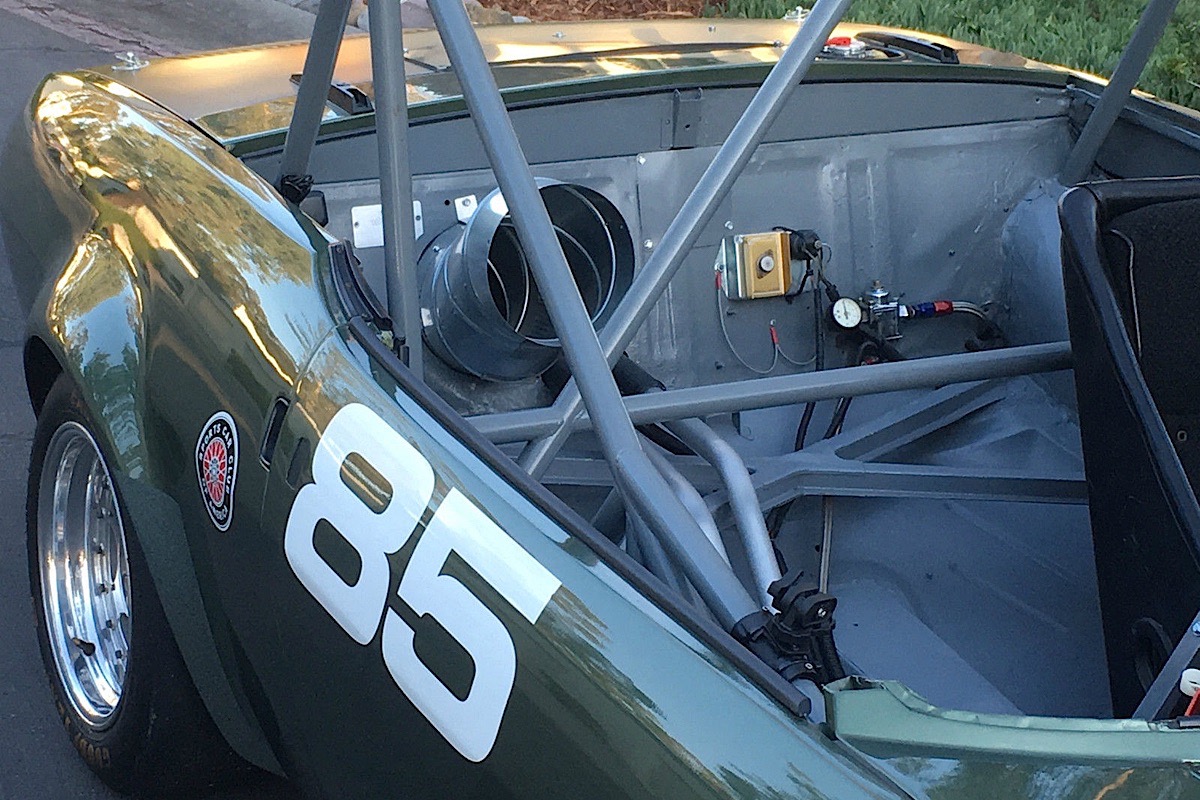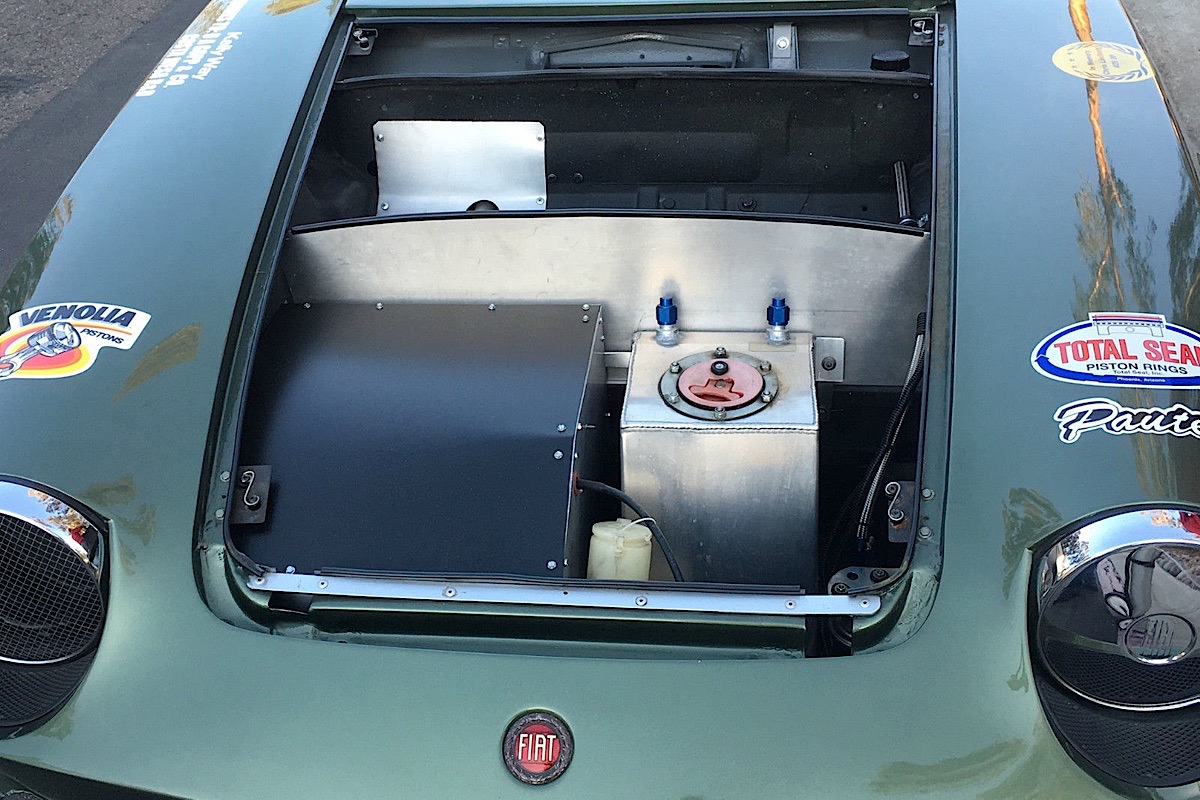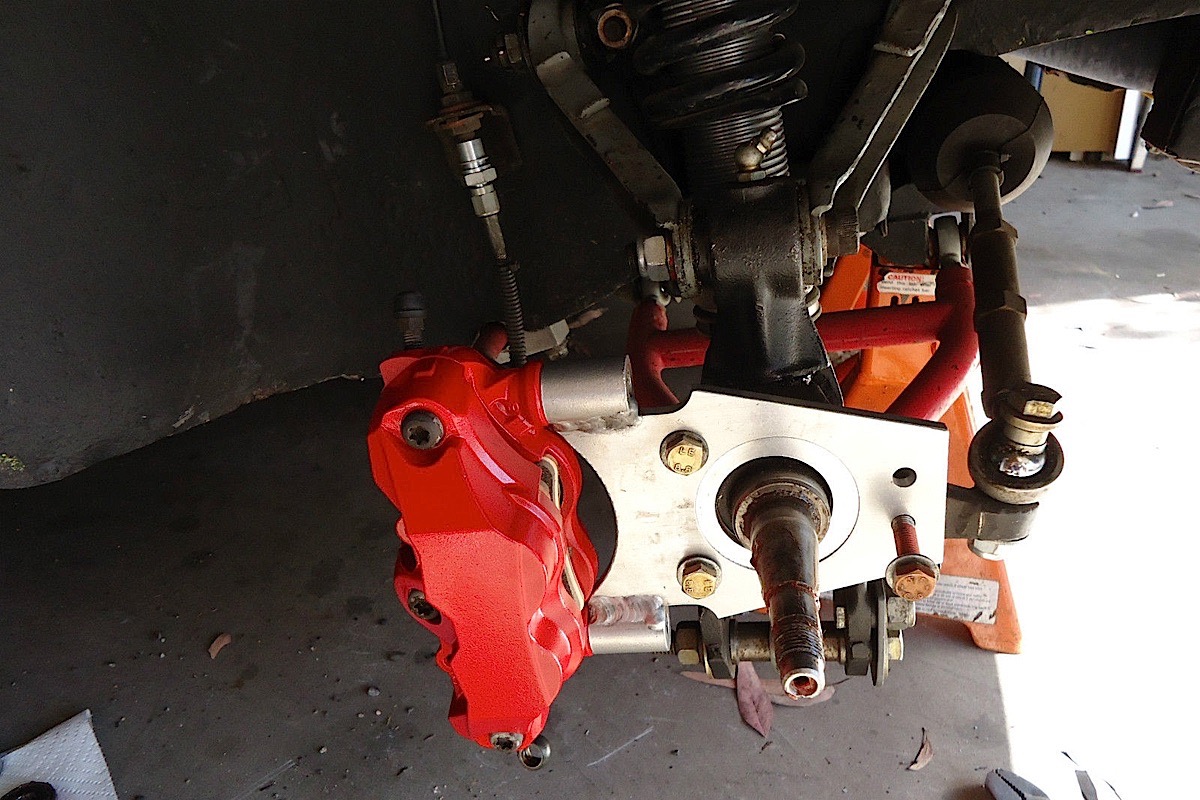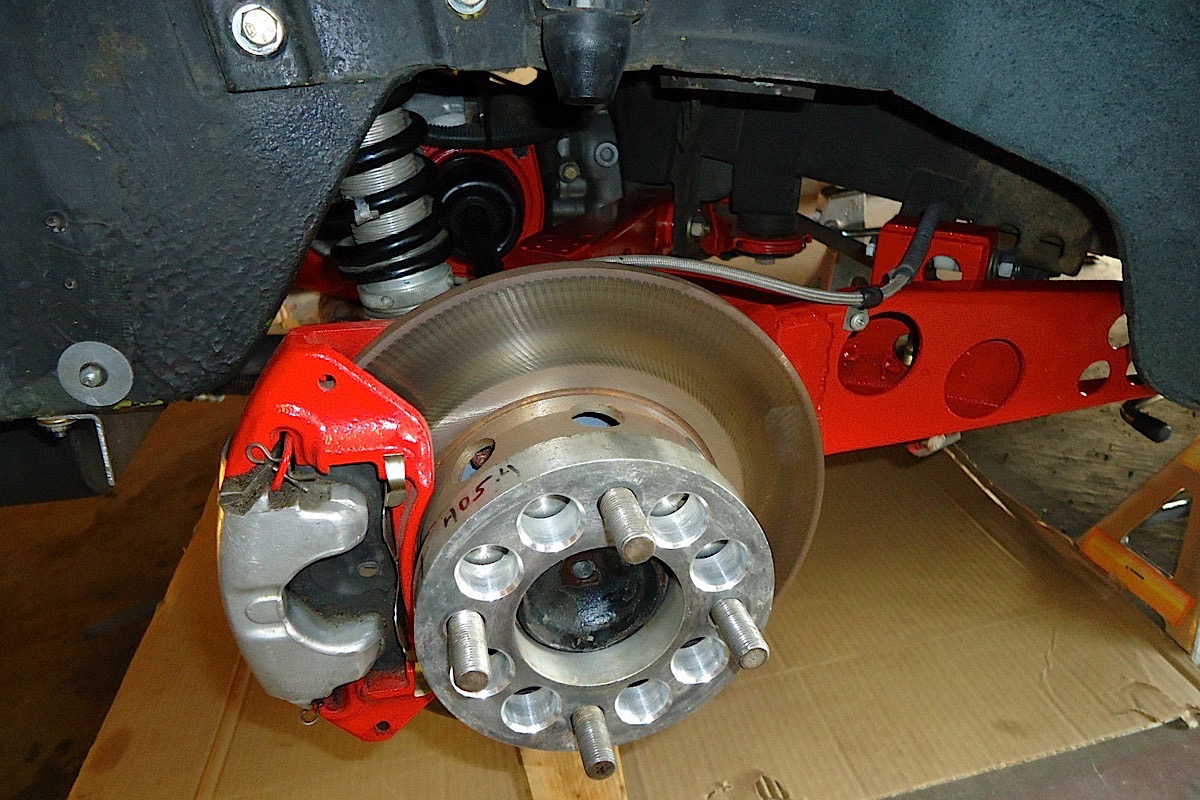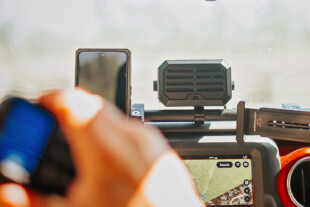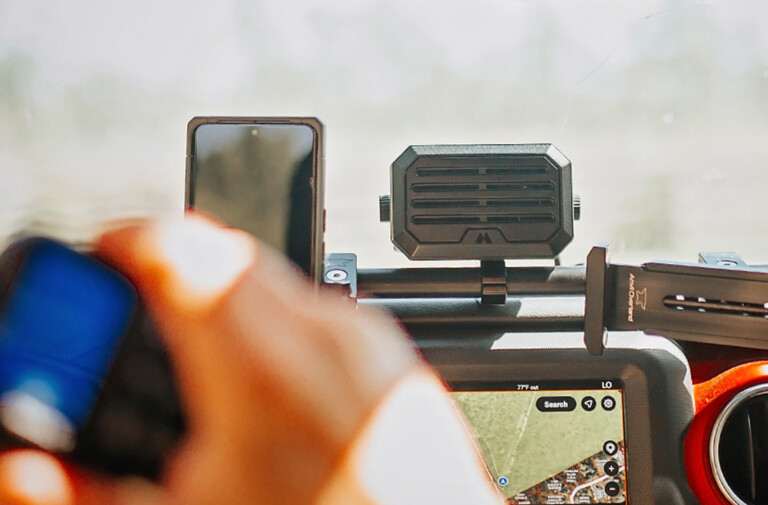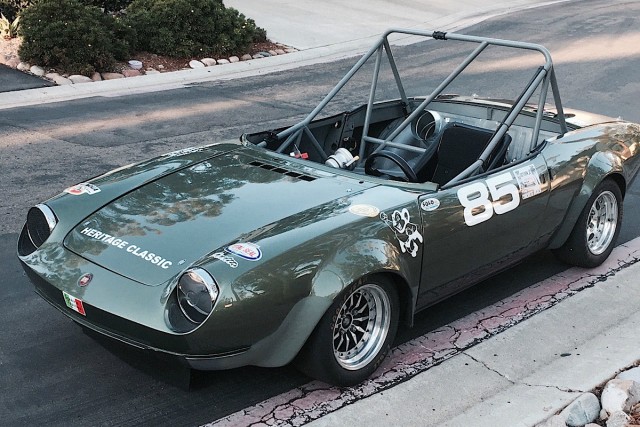 Ask any grip racer and they will tell you autocross is a completely different animal to road racing. Where high-horsepower, high-downforce, and taller ratio gears are key for ultimate speed and momentum around a sweeping track, the autocrosser has a different set of priorities.
Ask any grip racer and they will tell you autocross is a completely different animal to road racing. Where high-horsepower, high-downforce, and taller ratio gears are key for ultimate speed and momentum around a sweeping track, the autocrosser has a different set of priorities.
An autocross car’s success depends on the driver first and foremost, but in mechanical terms, a low-inertia i.e. light-weight car will accelerate and change direction with more urgency. Closer ratio gears, and fast steering mean an under-powered car can still hang with a big engine while threading the narrow corridors of a cone-marked circuit.
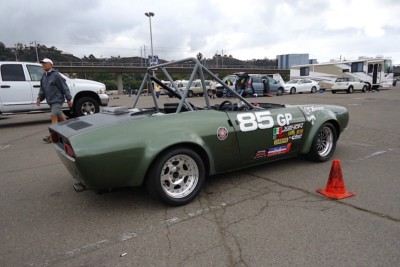 In the case of this historic Fiat, we find an example where suspension and weight transfer show their true value in spite of a low-horsepower powerplant. This 1969 Fiat Spyder ABARTH has had a long history of parking lot racing. Originally built for racing in 1978 by Craig Way, this Fiat has been campaigned by the same man for over 30 years.
In the case of this historic Fiat, we find an example where suspension and weight transfer show their true value in spite of a low-horsepower powerplant. This 1969 Fiat Spyder ABARTH has had a long history of parking lot racing. Originally built for racing in 1978 by Craig Way, this Fiat has been campaigned by the same man for over 30 years.
Nick-named “Mighty Mouse” this SCCA solo class car has had nearly 200 first place wins, two national championship titles, and five divisional championships to it’s name. The owner/builder has devoted a lot of love, time, and money into making this car a success, and that sort of grassroots-level dedication is inspiration for the future of autocrossers.
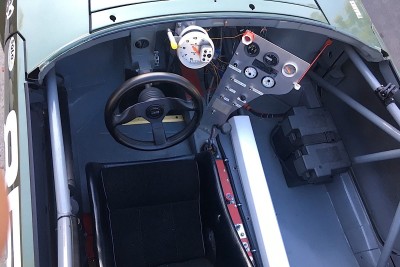 The build of this car has seen a fully built engine, transmission, suspension, and chassis. The end result is a 1,285 pound open top racer, producing 92 horsepower at 8,200 rpm, and revving to a screaming redline of 9,100 rpm. Don’t let the seemingly low horsepower numbers dissuade your respect for this green Spyder, remember the name of the game is not all about power.
The build of this car has seen a fully built engine, transmission, suspension, and chassis. The end result is a 1,285 pound open top racer, producing 92 horsepower at 8,200 rpm, and revving to a screaming redline of 9,100 rpm. Don’t let the seemingly low horsepower numbers dissuade your respect for this green Spyder, remember the name of the game is not all about power.
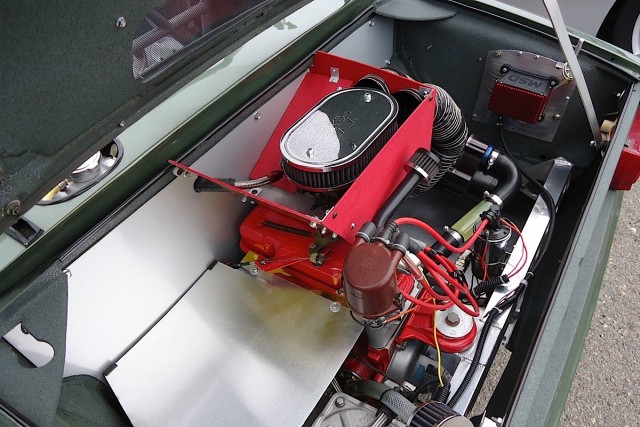 The engine started life as a stock 850 Spyder, punched out to 930 cubic centimeters the rear-mounted 4-cylinder includes custom, billet connecting rods, an ultra-light three pound aluminum flywheel, MSD ignition, balanced crankshaft, and extensive cylinder-head work. The PBS flowed head features flycut combustion chambers for compression ratio, aluminum roller rockers, Scuderia Topolino camshaft, and upgraded valve springs and keepers. The engine modifications are not limited to these key points, rather they extend into nearly every sub-system and part.
The engine started life as a stock 850 Spyder, punched out to 930 cubic centimeters the rear-mounted 4-cylinder includes custom, billet connecting rods, an ultra-light three pound aluminum flywheel, MSD ignition, balanced crankshaft, and extensive cylinder-head work. The PBS flowed head features flycut combustion chambers for compression ratio, aluminum roller rockers, Scuderia Topolino camshaft, and upgraded valve springs and keepers. The engine modifications are not limited to these key points, rather they extend into nearly every sub-system and part.
The transmission includes stock first and second gear ratios but tightens up the shifts with close ratio third and fourths. The differential has been welded for strength, and the axles are shot-peened for strength as well. The stout driveline is backed-up by an equally well-built chassis.
An extensive lightening regimen was applied to the structure of this Fiat. The doors were gutted, an aluminum firewall fitted, and hood/deck panel support structures removed. The roll cage is fabricated from 1 and 1/4 inch diameter tubing for this ultra-light sports car.
Handling is vastly improved by custom components. A Spitfire GT rack and pinion combined with shortened steering arms means lock to lock rotation occurs in only 1.6 turns, this quick-ratio steering means the driver needs but flex a wrist and the car is diving into the corners. Custom lower A-arms were fabricated by D.A. Gopp to accommodate Carrera Coilovers. The brakes are adapted from a Suzuki GSXR750 for big surface area and light weight stopping.
The list of modifications go on, from custom composite work to interior security. We hope that whoever takes up this Fiat appreciates the effort that went into it’s creation and is inspired to continue the privateer legacy it represents.
In this San Diego autocross video we see how well this little Fiat makes it’s way around the cones. The power to weight ratio certainly shows well, and the handling compliments.



